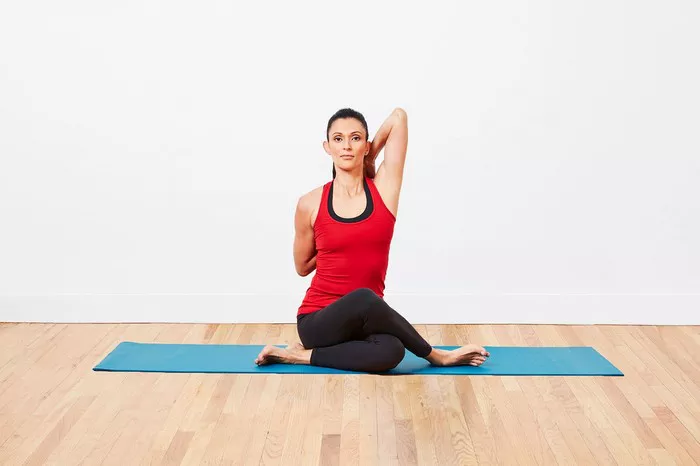The ancient science of yoga offers various practices designed to balance the body, mind, and spirit. Among these, kriyas hold a special place, as they involve systematic techniques that cleanse, energize, and stimulate different aspects of our being. A common question that arises among yoga practitioners and enthusiasts is: which kriya stimulates the brain?
Understanding Kriya Yoga
Kriya Yoga is a spiritual discipline that involves breath control, meditation, and certain bodily postures to enhance mental clarity, energy flow, and spiritual awakening. The term “kriya” means “action” or “movement” and refers to specific techniques designed to activate prana (life force energy) in a directed manner. These kriyas have been passed down through various yogic traditions and can have profound effects on brain function.
Several kriyas specifically target the brain by improving focus, enhancing memory, balancing neurotransmitter activity, and increasing oxygenation. These kriyas work by stimulating the central nervous system, regulating the endocrine system, and balancing energy in the body.
Kriyas That Stimulate the Brain
1. Kapalabhati (Skull-Shining Breath)
Kapalabhati is a cleansing kriya that consists of forceful exhalations followed by passive inhalations. This practice oxygenates the brain, removes toxins, and increases alertness.
Benefits for the Brain:
- Enhances oxygen supply to the brain, promoting mental clarity and focus.
- Stimulates the frontal lobe, improving cognitive functions.
- Clears mental fog and alleviates stress.
- Helps in overcoming lethargy and fatigue.
How to Perform Kapalabhati:
- Sit in a comfortable, upright position with your spine straight.
- Take a deep breath in and then exhale forcefully through the nose while contracting the abdominal muscles.
- Let the inhalation be passive, allowing the lungs to fill naturally.
- Continue this cycle at a steady rhythm for 1–2 minutes.
2. Bhastrika (Bellows Breath)
Bhastrika is a dynamic pranayama technique that increases the pranic flow and stimulates brain activity.
Benefits for the Brain:
- Improves oxygenation and circulation to the brain.
- Activates the sympathetic nervous system, increasing energy and alertness.
- Enhances mental agility and concentration.
- Helps in clearing stress and anxiety.
How to Perform Bhastrika:
- Sit in a comfortable posture with your hands on your knees.
- Take a deep inhalation through the nose and forcefully exhale.
- Continue rapid inhalations and exhalations for about 20–30 breaths.
- Pause, take a deep breath, and relax before repeating for another round.
3. Agnisara Kriya (Fire Cleansing Practice)
Agnisara kriya is a technique that involves engaging the abdominal muscles in a rhythmic motion to stimulate digestive fire and energy flow.
Benefits for the Brain:
- Enhances circulation, delivering more oxygen to the brain.
- Stimulates the vagus nerve, promoting relaxation and mental clarity.
- Balances energy levels and improves focus.
How to Perform Agnisara Kriya:
- Stand or sit in a comfortable position.
- Exhale completely and contract your abdominal muscles inward.
- Release and contract repeatedly, creating a wave-like motion.
- Perform for 20–30 seconds, then inhale and relax.
4. Trataka (Concentrated Gazing)
Trataka is a kriya that involves focused gazing at a fixed point, typically a candle flame, to enhance concentration and mental clarity.
Benefits for the Brain:
- Strengthens focus and cognitive abilities.
- Improves memory retention and visual concentration.
- Stimulates the pineal gland, which regulates sleep and mood.
- Reduces mental distractions and stress.
How to Perform Trataka:
- Sit in a dark, quiet room with a candle placed at eye level.
- Gaze steadily at the flame without blinking for as long as possible.
- When your eyes feel tired, close them and visualize the flame.
- Repeat for 5–10 minutes.
5. Shambhavi Mahamudra Kriya
Shambhavi Mahamudra is an advanced kriya that involves breath awareness, meditation, and a specific eye-focused gesture.
Benefits for the Brain:
- Enhances brainwave coherence, improving mental efficiency.
- Balances the nervous system, reducing stress and anxiety.
- Increases focus, creativity, and awareness.
How to Perform Shambhavi Mahamudra:
- Sit in a meditative posture and close your eyes.
- Focus on your breath while slightly lifting your gaze toward the space between your eyebrows.
- Maintain gentle awareness and deep breathing for 10–15 minutes.
6. Nauli Kriya (Abdominal Churning)
Nauli Kriya involves the rolling motion of the abdominal muscles to stimulate internal organs and pranic flow.
Benefits for the Brain:
- Increases mental alertness and clarity.
- Stimulates the vagus nerve, reducing stress.
- Enhances energy levels and brain function.
How to Perform Nauli Kriya:
- Stand with feet hip-width apart and exhale completely.
- Contract the abdominal muscles inward and roll them in a circular motion.
- Repeat for 10–15 seconds before releasing.
Conclusion
Kriyas offer a powerful way to stimulate the brain, enhance mental clarity, and promote overall well-being. Practices such as Kapalabhati, Bhastrika, Agnisara, Trataka, Shambhavi Mahamudra, and Nauli Kriya directly impact brain function by increasing oxygenation, stimulating the nervous system, and enhancing energy flow. Incorporating these kriyas into a daily routine can significantly improve cognitive function, focus, and emotional stability. However, it is essential to learn these techniques from a qualified instructor to ensure proper practice and avoid potential risks. Through regular practice, one can experience profound changes in mental sharpness, creativity, and inner balance.
Related Topics:

















